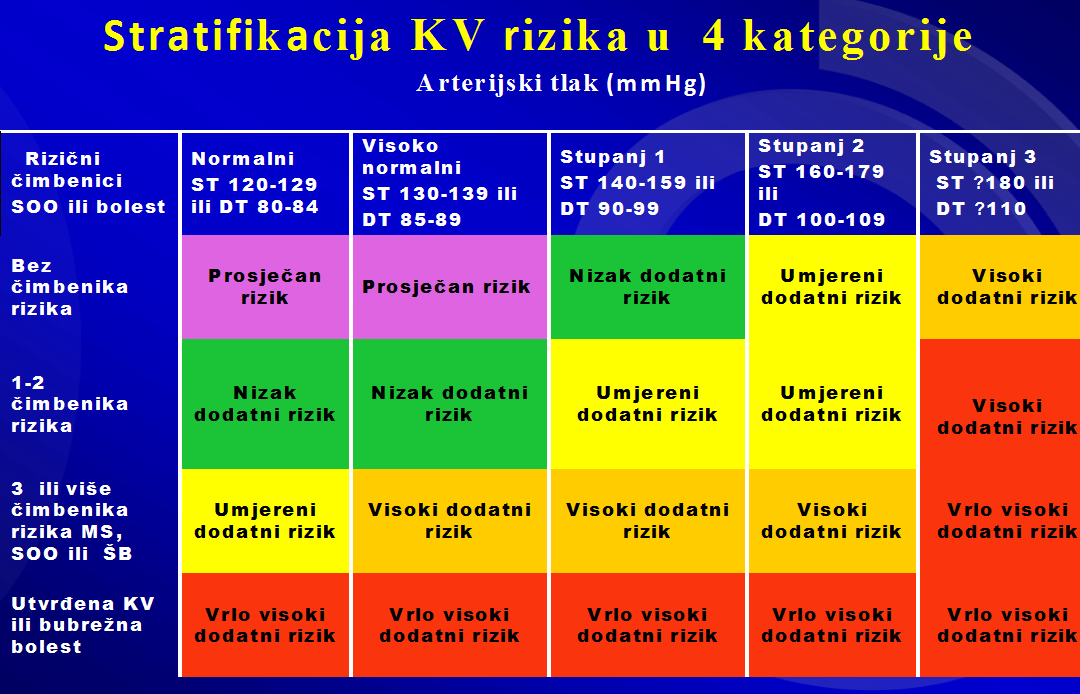ROCHESTER INSTITUTE OF TECHNOLOGY COURSE OUTLINE FORM GOLISANO COLLEGE
2200 NORTH SQUIRREL ROAD 216 O’DOWD HALL ROCHESTER MICHIGANCOMS COORDINATE LOCALIZATION ROBERT KLINE PHD MAYO CLINIC ROCHESTER
CURRICULUM VITAE NAME HEIDI VUORINEN ADDRESS 25 ROCHESTER ROADLONDON
Department of Environmental Health and Safety Oakland University Rochester
DIRECTIONS TO THE ROCHESTER ARENA FROM THE EAST SPAULDING
EVALUATION OF LIBRARY DIRECTOR ROCHESTER HILLS PUBLIC LIBRARY SEPTEMBER
APPENDIX A

Rochester INSTITUTE OF TECHNOLOGY
Course outline form
Golisano
College of computing
and information sciences
School of Interactive Games & Media
NEW: GCCIS-IGME-236-InteractionImmersionAndTheMediaInterface
1.0 Course Designations and Approvals
|
Required course approvals: |
Approval request date: |
Approval granted date: |
|
Academic Unit Curriculum Committee |
09/06/2010 |
10/4/2010 |
|
College Curriculum Committee |
10/15/2010 |
10/22/2010 |
|
Optional designations: |
Is designation desired? |
*Approval request date: |
**Approval granted date: |
||
|
General Education: |
Yes |
* No |
|
|
|
|
Writing Intensive: |
Yes |
* No |
|
||
|
Honors |
Yes |
* No |
|
||
2.0 Course information:
|
Course title: |
Interaction, Immersion, & the Media Interface |
|
Credit hours: |
3 |
|
Prerequisite(s): |
(IGME-102 or IGME-106) & IGME-110 |
|
Co-requisite(s): |
None |
|
Course proposed by: |
Andrew Phelps & Christopher Egert |
|
Effective date: |
09/01/2013 |
|
|
Contact hours |
Maximum students/section |
|
Classroom |
|
|
|
Lab |
|
|
|
Studio |
|
|
|
Active Learning |
3 |
30 |
2.a Course Conversion Designation*** (Please check which applies to this course). *For more information on Course Conversion Designations please see page four.
|
X |
Semester Equivalent (SE) Please indicate which quarter course it is equivalent to: 4080-323 |
|
|
Semester Replacement (SR) Please indicate the quarter course(s) this course is replacing:
|
|
|
New Course |
2.b Semester(s) offered (check)
|
Fall: X |
Spring: X |
Summer |
Other |
All courses must be offered at least once every 2 years. If course will be offered on a bi-annual basis, please indicate here:
2.c Student Requirements
|
Students required to take this course: (by program and year, as appropriate) Students in the New Media Interactive Development program and students in the Game Design & Development program. |
|
Students who might elect to take the course: None |
In the sections that follow, please use sub-numbering as appropriate (eg. 3.1, 3.2, etc.)
3.0 Goals of the course (including rationale for the course, when appropriate):
|
The primary goal of this course is the study of interface and interaction models in a media-specific context, with particular emphasis on the concept of the immersive interface. Students will explore concepts such as perception, expectation, Gestalt Theory, interactivity, Semiotics, presence, and immersion in the context of media application development and deployment. In addition, underlying concepts of cognitive psychology and cognitive science will be integrated where appropriate. Students will integrate these theories in the exploration of the immersive interface, and related concepts such as self-user-interface modification, augmentation of identity, and the interface as a social catalyst. |
4.0 Course description (as it will appear in the RIT Catalog, including pre- and co-requisites, and semesters offered). Please use the following format:
Course number: Name of Course
Description as you want it to appear in the catalog. (Pre or co-requisites)
Class X, Lab X, Credit X (Semester offered)
|
IGME-236 Interaction, Immersion, & the Media Interface Short Title: Interact, Immers & Media Iface This course examines the concepts of interface and interaction models in a media-specific context, with particular emphasis on the concept of the immersive interface. This course explores concepts such as perception, expectation, Gestalt Theory, interactivity, Semiotics, presence, and immersion in the context of media application development and deployment. In addition, underlying concepts of cognitive psychology and cognitive science will be integrated where appropriate. These theories are then integrated in the exploration of the immersive interface, and with related concepts such as user-level-interface modification, augmentation of identity, and the interface as a social catalyst. ((IGME-102 New Media Interactive Design and Algorithmic Problem Solving II or IGME-106 Game Development and Algorithmic Problem Solving II) & IGME-110 Introduction to Interactive Media) Class 3, Credit 3 (F,S) |
Possible resources (texts, references, computer packages, etc.)
|
The Design of Everyday Things by Donald Norman. Basic Books, 2002. Computers as Theatre by Brenda Laurel. Addison Wesley, Boston, Mass., 1992. Reload: Rethinking Women + Cyberculture edited by Mary Flannagan and Austin Booth. MIT Press, Cambridge, Mass., 2002. Critical Issues in Electronic Media edited by Simon Penny. SUNY Press, Albany, NY., 1995. Hamlet on the Holodeck: The Future of Narrative in Cyberspace by Janet H. Murray. MIT Press, Cambridge, Mass., 1997. The Language of New Media by Lev Manovich. MIT Press, Cambridge, Mass., 2001. The Art of Interactive Design by Chris Crawford. No Starch Press, San Francisco, CA., 2003. Virtual Environments and Advanced Interface Design edited by Woodrow Barfield and Thomas A. Furness III. Oxford University Press, NY., 1995. Neuromancer (20th Edition) by William Gibson. Ace Publishers. 2004. |
6.0 Topics (outline):
|
Formal and Informal Methodologies of Interface/Interaction Design Human-Centered Design Presence Interactivity Immersion |
7.0 Intended course learning outcomes and associated assessment methods of those outcomes (please include as many Course Learning Outcomes as appropriate, one outcome and assessment method per row).
|
Course Learning Outcome |
Assessment Method |
|
7.1 Students can identify major theories of human centered design.
|
Assessed through in-class exercises and a written and/or oral report.
|
|
7.2 Students will identify major theories related to concepts of presence, interactivity and immersion as they relate to media-centric systems.
|
Assessed through in-class exercises, critique of existing applications, and a written and/or oral report.
|
|
7.3 Students will integrate theories of immersion, with theories of user-modifiable interfaces, augmentation of identity, and the interface as a social catalyst.
|
Assessed through in-class exercises and written and oral reports.
|
8.0 Program outcomes and/or goals supported by this course
|
Game Design and Development identify, critique, and apply knowledge of media theory, mediated communication, and aesthetics towards the construction of media-centric applications New Media Interactive Development identify, critique, integrate, and apply knowledge of media theory, mediated communication, interactivity, and aesthetics towards the construction of media-centric applications apply knowledge of design and developer roles in new media production |
9.0
|
|
General Education Learning Outcome Supported by the Course, if appropriate |
Assessment Method |
|
Communication |
||
|
|
Express themselves effectively in common college-level written forms using standard American English |
|
|
|
Revise and improve written and visual content |
|
|
|
Express themselves effectively in presentations, either in spoken standard American English or sign language (American Sign Language or English-based Signing) |
|
|
X |
Comprehend information accessed through reading and discussion |
Assessed through in-class exercises, critique of existing applications, and a written and/or oral report. |
|
Intellectual Inquiry |
||
|
X |
Review, assess, and draw conclusions about hypotheses and theories |
Assessed through in-class exercises, critique of existing applications, and a written and/or oral report. |
|
|
Analyze arguments, in relation to their premises, assumptions, contexts, and conclusions |
|
|
|
Construct logical and reasonable arguments that include anticipation of counterarguments |
|
|
X |
Use relevant evidence gathered through accepted scholarly methods and properly acknowledge sources of information |
Assessed through in-class exercises, critique of existing applications, and a written and/or oral report. |
|
Ethical, Social and Global Awareness |
||
|
X |
Analyze similarities and differences in human experiences and consequent perspectives |
Assessed through in-class exercises, critique of existing applications, and a written and/or oral report. |
|
|
Examine connections among the world’s populations |
|
|
|
Identify contemporary ethical questions and relevant stakeholder positions |
|
|
Scientific, Mathematical and Technological Literacy |
||
|
|
Explain basic principles and concepts of one of the natural sciences |
|
|
|
Apply methods of scientific inquiry and problem solving to contemporary issues |
|
|
|
Comprehend and evaluate mathematical and statistical information |
|
|
|
Perform college-level mathematical operations on quantitative data |
|
|
X |
Describe the potential and the limitations of technology |
Assessed through in-class exercises, critique of existing applications, and a written and/or oral report. |
|
X |
Use appropriate technology to achieve desired outcomes |
Assessed through in-class exercises, critique of existing applications, and a written and/or oral report. |
|
Creativity, Innovation and Artistic Literacy |
||
|
X |
Demonstrate creative/innovative approaches to course-based assignments or projects |
Assessed through in-class exercises, critique of existing applications, and a written and/or oral report. |
|
|
Interpret and evaluate artistic expression considering the cultural context in which it was created |
|
10.0 Other relevant information (such as special classroom, studio, or lab needs,
special scheduling, media requirements, etc.)
|
10.1 Smart classroom for lecture 10.2 Studio classroom for demonstrations and critiques 10.3 Laboratory equipment capable of accessing various game and media technologies as appropriate to illustrate class concepts. |
*Optional course designation; approval request date: This is the date that the college curriculum committee forwards this course to the appropriate optional course designation curriculum committee for review. The chair of the college curriculum committee is responsible to fill in this date.
**Optional course designation; approval granted date: This is the date the optional course designation curriculum committee approves a course for the requested optional course designation. The chair of the appropriate optional course designation curriculum committee is responsible to fill in this date.
***Course Conversion Designations
Please use the following definitions to complete table 2.a on page one.
Semester Equivalent (SE) – Closely corresponds to an existing quarter course (e.g., a 4 quarter credit hour (qch) course which becomes a 3 semester credit hour (sch) course.) The semester course may develop material in greater depth or length.
Semester Replacement (SR) – A semester course (or courses) taking the place of a previous quarter course(s) by rearranging or combining material from a previous quarter course(s) (e.g. a two semester sequence that replaces a three quarter sequence).
New (N) - No corresponding quarter course(s).
PSCIR 101 MEGUID FALL 2015 UNIVERSITY OF ROCHESTER –
ROCHESTER COMMUNITY AND TECHNICAL COLLEGE STUDENTATHLETE MEDICAL EXPENSES &
ROCHESTER INSTITUTE OF TECHNOLOGY B THOMAS GOLISANO COLLEGE
Tags: college of, the college, golisano, institute, rochester, course, outline, technology, college
- PARENTS…IMPORTANT SAFETY REMINDERS THE SAFETY OF OUR CHILDREN
- PIRASOA FICHAS PARA REALIZAR LAS ASESORIAS DEL PROA DE
- CURRICULUM VITAE EUROPASS INFORMAŢII PERSONALE NUME PRENUME TUDOSE
- С МИНИСТЕРСТВО ТРАНСПОРТА РОССИЙСКОЙ ФЕДЕРАЦИИ РУКОВОДИТЕЛЬ СОКОЛОВ МИХАИЛ ЮРЬЕВИЧ
- NORBA REVISTA DE HISTORIA NORMAS PARA LA PRESENTACIÓN DE
- EDUCACIÓN SECUNDARIA PARA PERSOAS ADULTAS ÁMBITO DE COMUNICACIÓN EDUCACIÓN
- PODER PARA HERENCIAS Y VENDER NÚMERO EN
- BREAD MOLD GROWTH MATERIALS PER GROUP FOUR SELFSEALING SANDWICH
- THE GREAT WAVE T HE STORY OF A MONGOL
- PERIODIC CONSTRUCTION OBSERVATION REPORT REPORT NO PROJECT DATE
- SHAFTESBURY SCHOOL SIXTH FORM 1619 BURSARY APPLICATION FORM IF
- ESSAY 2 ANDREW THE PURPOSE OF LAUGHING WITH SUSANNA
- MILIEUBELEIDSPLAN OOSTVLAANDEREN 2005 2009 DEEL I HET
- RIDING ESTABLISHMENT ACTS 1964 AND 1970 APPLICATION FOR LICENCE
- DOMESTIC PARTNER BENEFIT COVERAGE IN ORDER TO INSURE A
- D RAGON BOATS NSW INC (INCORPORATED UNDER THE ASSOCIATIONS
- MALIYE BAKANLIĞINDAN MILLI EMLAK GENEL TEBLIĞI (SIRA
- CHARTER SCHOOLS LEGAL COMPLIANCE MANUAL CHARTER SCHOOLS INTRODUCTION IN
- MITTEILUNG ZUM THÜRINGER STIFTUNGSVERZEICHNIS VERZEICHNISBLATT 2 AN DAS
- ANEXO II (ENVIAR AL DPTO DE RELACIONES EXTERNAS) PETICIÓN
- FOR IMMEDIATE RELEASE CONTACT JULY 20 2021
- SCIENCE IN COACHING RESOURCE PHYSICAL DEMANDS OF SPORTS PARTICIPATION
- WESTERN ILLINOIS UNIVERSITY BOARD OF TRUSTEES MAY 6 2020
- CONSULADO GENERAL DE ESPAÑA BRUSELAS SOLICITUD CAMBIO DE DOMICILIO
- CONTACTO CON LOS MEDIOS DE DIFUSIÓN JESSICA MALTER +1
- EAST STROUDSBURG UNIVERSITY OF PENNSYLVANIA 200 PROSPECT STREET ZIMBARLILJENSTEIN
- 1CENTRÁLNY LOKÁLNY ADMINISTRÁTOR ZA SPRÁVNU FUNKČNOSŤ SYSTÉMU AIS2
- INTRODUCTION TO ILWIS FOR WINDOWS 1 INTRODUCCIÓN A ILWIS
- DRINK DRIVING AND THE LAW THERE ARE TWO DIFFERENT
- PROF DR HERMANN STINGLHAMMER UNIVERSITÄT PASSAU VOM GEISTSUBJEKT ZUR
 CONSUMO DE AGUA UNIDAD IV CONSUMO DE AGUA
CONSUMO DE AGUA UNIDAD IV CONSUMO DE AGUAMONITORING MOLECULES IN NEUROSCIENCE MONITORING MOLECULES IN NEUROSCIENCE HISTORICAL
 ŁÓDŹ DNIA ……………………………… POWÓD …………………………………… …………………………………… … ………………………………… (DANE
ŁÓDŹ DNIA ……………………………… POWÓD …………………………………… …………………………………… … ………………………………… (DANE FEDERAL COMMUNICATIONS COMMISSION FCC 05115 BEFORE THE FEDERAL COMMUNICATIONS
FEDERAL COMMUNICATIONS COMMISSION FCC 05115 BEFORE THE FEDERAL COMMUNICATIONS2 FORM 102 RULES 3477 INTERLOCUTORY APPLICATION FOR ORDER
 0 ORGANIZACIÓN DE LOS ESTADOS AMERICANOS CONSEJO INTERAMERICANO PARA
0 ORGANIZACIÓN DE LOS ESTADOS AMERICANOS CONSEJO INTERAMERICANO PARA BILBOKO ERREGE KABALGATAKO EKITALDIEN EGITARAU ZEHATZA (URTARRILAK 5 1800)
BILBOKO ERREGE KABALGATAKO EKITALDIEN EGITARAU ZEHATZA (URTARRILAK 5 1800)LLEI 52006 DE 10 DE MAIG DEL LLIBRE CINQUÈ
 2 UNECE UNITED NATIONS ECONOMIC COMMISSION FOR EUROPE ESCAP
2 UNECE UNITED NATIONS ECONOMIC COMMISSION FOR EUROPE ESCAP PROGRAM PREVENCIJE KARDIOVASKULARNIH BOLESTI U OBITELJSKOJ MEDICINI PREVENTION OF
PROGRAM PREVENCIJE KARDIOVASKULARNIH BOLESTI U OBITELJSKOJ MEDICINI PREVENTION OFAMBOS SEXOS DE 16 A 64 AÑOS PARO REGISTRADO
ZAŁĄCZNIK NR 6 DO REGULAMINU ŚWIADCZEŃ DLA STUDENTÓW WSP
 GAZİEMİR BELEDİYESİ MECLİS KARARI KARAR NO102PARK VE BAHMÜD(5) KARAR
GAZİEMİR BELEDİYESİ MECLİS KARARI KARAR NO102PARK VE BAHMÜD(5) KARAR A GREAT WAY TO EARN EXTRA MONEY THE US
A GREAT WAY TO EARN EXTRA MONEY THE USZASADY PRZYGOTOWANIA METODOLOGII WYLICZENIA KOSZTÓW POŚREDNICH PROJEKTU NINIEJSZE OPRACOWANIE
VALE OF GLAMORGAN COUNCIL SUPPORTING PEOPLE WEEKLY RETURN
PO VII WBA 262102020 TARNOBRZEG DNIA 12 LISTOPADA 2020
EN LINTZOAIN EN LA CASA CONSISTORIAL DEL VALLE DE
WTO PUBLIC SYMPOSIUM WORKSHOP ON TRADE FACILITATION A TOOL
 TÍTULO ACÁ POR AUTOR SEUDÓNIMO TÍTULO ACÁ EL PRIMER
TÍTULO ACÁ POR AUTOR SEUDÓNIMO TÍTULO ACÁ EL PRIMER